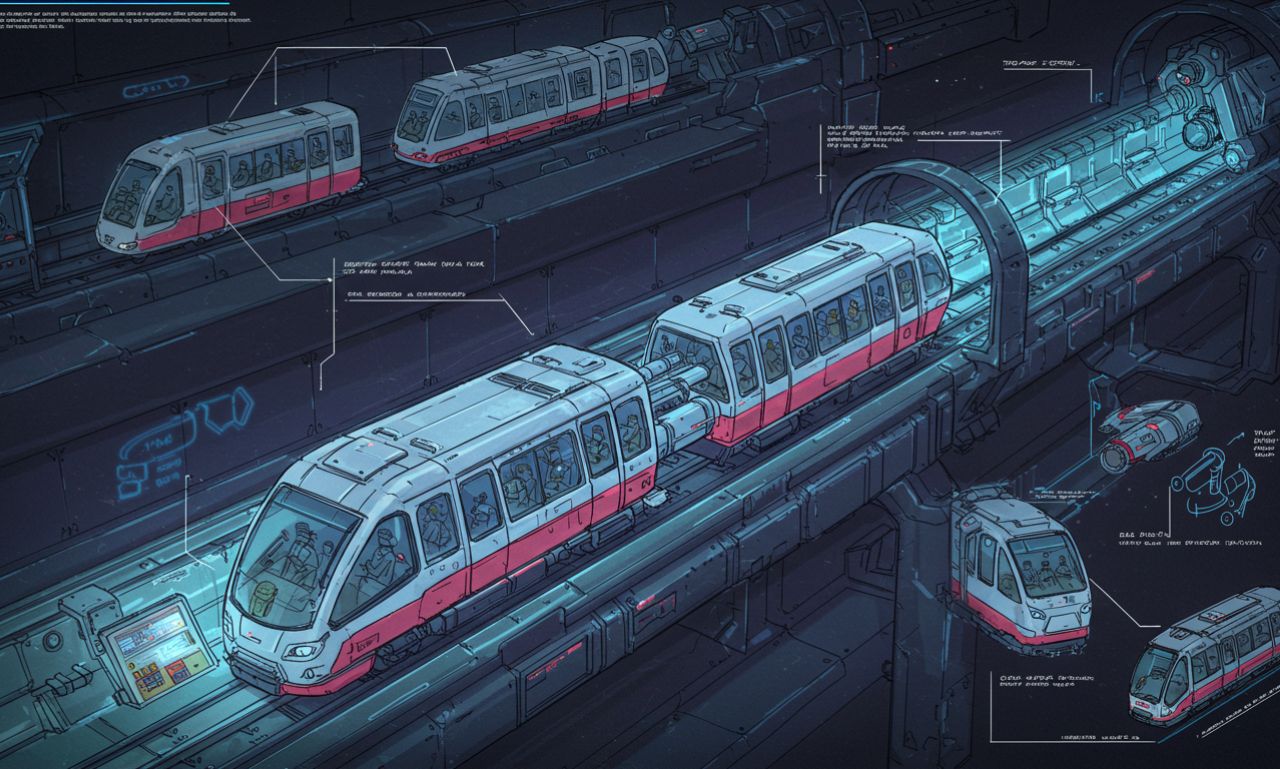Technology and innovation often introduce new terms, devices, and identifiers that play a role in shaping industries. One such emerging concept is Tran Tube. While the name may sound unfamiliar to some, it represents an idea that combines practicality, adaptability, and innovation.
This article will explore Tran Tube in detail, including its meaning, origin, features, applications, benefits, challenges, and future possibilities.
What Is Tran Tube?
At its core, TranTube can be understood as a system, product, or concept designed to transfer, transport, or transform something—whether it is energy, data, or materials. Depending on context, it may refer to:
-
A technological component in engineering or electronics.
-
A transportation model for moving resources efficiently.
-
A communication channel in digital systems.
-
A research framework used in scientific exploration.
The versatility of TranTube lies in its adaptability across different domains.
The Origin of the Term Tran Tube
The term TranTube appears to be derived from two elements:
-
Tran – Short for transfer, transit, or transformation.
-
Tube – A channel, container, or pathway for movement.
Together, TranTube suggests a structured method for transferring or channeling something from one place to another.
Why Tran Tube Matters
In today’s fast-paced digital and industrial landscape, efficient systems are essential. TraTube matters because it offers:
-
Efficiency – Faster and smoother transfer of resources or information.
-
Versatility – Useful in multiple industries.
-
Innovation – Represents a forward-thinking approach to solving problems.
-
Scalability – Can adapt to small-scale and large-scale applications.
Features
1. Channel-Based Structure
As the name suggests, TranTube operates like a pathway or container, making it ideal for transport and flow.
2. Flexibility
It can be applied to different industries, including technology, research, and engineering.
3. Innovation-Oriented
TranTube focuses on new solutions for traditional problems.
4. User-Centered Design
In practical contexts, TranTube emphasizes accessibility and usability.
Applications
Tran Tube in Engineering
In engineering, TranTube may be used as a pipeline, circuit, or modular system that allows efficient transfer of energy or materials.
Tran Tube in Communication
In digital technology, TranTube might represent a channel for transmitting data, similar to information pipelines in networks.
Tran Tube in Research
In academic or scientific research, TranTube could serve as a framework for experimenting with resource transfer, energy flow, or transformation models.
Tran Tube in Industry
Businesses could adopt TranTube as a model for supply chain efficiency, transportation, or product development.
Advantages
-
Streamlined flow – Reduces friction in transfer processes.
-
Scalability – Works in both small and large applications.
-
Innovation – Provides new approaches for traditional systems.
-
Reliability – Offers structured and consistent performance.
-
Versatility – Applicable across industries.
Challenges of Tran Tube
Despite its benefits, TranTube also faces challenges:
-
Ambiguity – The term requires clear definition in each industry.
-
Complexity – May need technical expertise for implementation.
-
Adoption barriers – Businesses may hesitate to invest in new systems.
-
Compatibility issues – Integration with existing structures can be difficult.
Tran Tube in Comparison
| Aspect | Tran Tube | Traditional Systems |
|---|---|---|
| Flexibility | High, adaptable | Often rigid and fixed |
| Efficiency | Optimized for transfer | Can be slower |
| Innovation | Focused on modern solutions | Conventional, less adaptable |
| Industry Use | Broad applications | Narrow, industry-specific |
Tran Tube in Everyday Life
Though technical, TranTube has potential everyday applications. For instance, it could represent:
-
Digital file transfer pipelines in apps and software.
-
Smart transportation tubes in futuristic city designs.
-
Sustainable energy systems for moving resources efficiently.
Case Study: Tran Tube in Technology
Consider a tech company developing a TranTube system for faster data transfer. By using structured pipelines, they reduce delays and improve connectivity. The result is a system that supports both speed and reliability, improving user experience.
This case highlights how TranTube functions as both a technical and practical solution.
Expert Perspectives
Experts across fields suggest that TranTube could evolve into a standard framework. Engineers see its value in infrastructure, while technologists highlight its digital potential. Researchers note that Tran Tube can help bridge gaps between theory and practice.
The Future of Tran Tube
The future looks promising for TranTube, with potential roles in:
-
Digital Communication – Smarter, faster transfer systems.
-
Transportation – Efficient urban transit designs.
-
Sustainability – Eco-friendly pipelines for resources.
-
Global Industry – A universal model for transfer and innovation.
As industries move toward automation and smart systems, TranTube could become a crucial part of future innovation.
How to Implement Tran Tube
-
Define purpose – Identify what needs to be transferred.
-
Design a channel – Create a structured pathway.
-
Ensure compatibility – Integrate with existing systems.
-
Focus on efficiency – Optimize the flow for speed and reliability.
-
Evaluate outcomes – Track performance and adjust as needed.
Conclusion
TranTube is more than a name—it is a concept representing efficiency, transfer, and transformation across multiple industries. Whether in technology, research, engineering, or communication, it provides structured solutions for complex challenges.
While ambiguity and adoption barriers remain, the potential of TranTube as a symbol of progress is clear. As industries evolve, TranTube may become an essential framework in shaping the way resources, data, and ideas move across the world.

